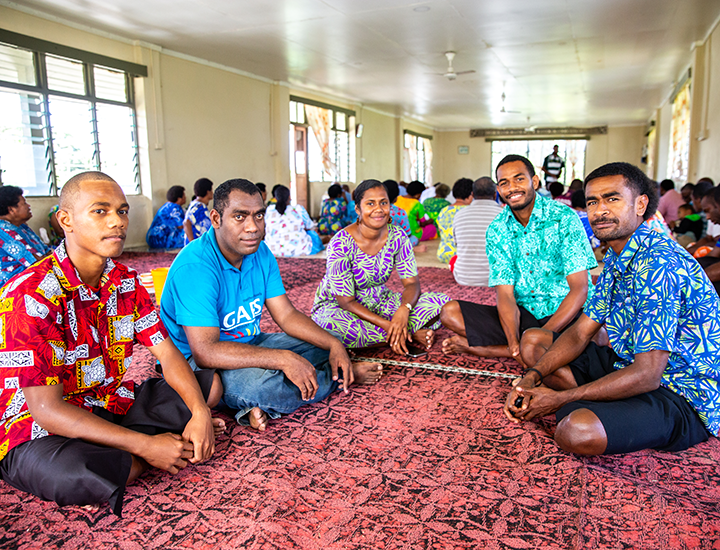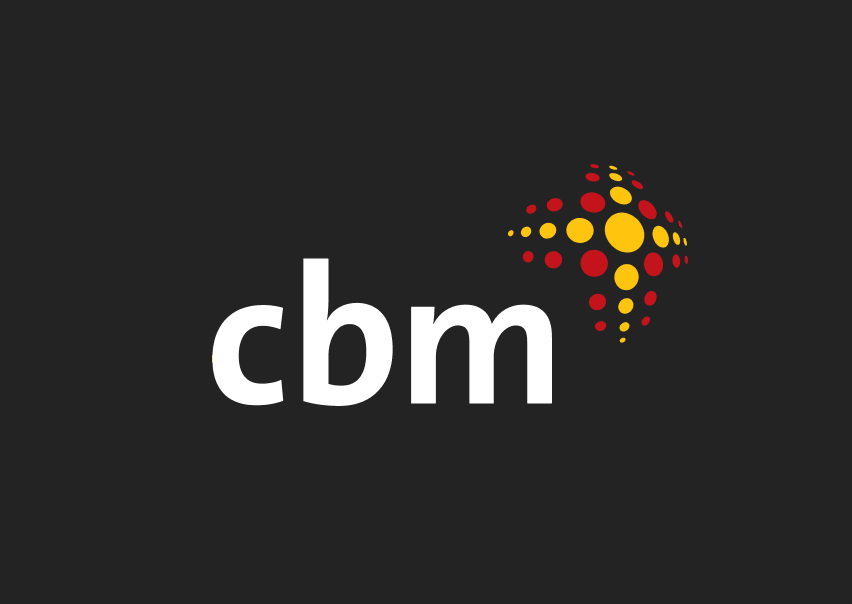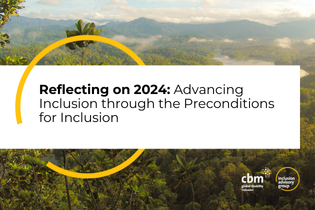How we can reduce the impact of disaster events on people with disabilities
Stories | February 9, 2022 | Author: Gemma Muir, CBM Advocacy and Communications Officer
Close to 200 million people globally are affected by disaster events each year. This is increasing due to climate change. Everyone deserves to have equal access to safety during disasters, yet people with disabilities are often the worst affected when a disaster strikes.
People with disabilities are at higher risk of being injured or losing their lives during a disaster. They may not be able to get to safety on their own and may be left behind by their families. People with disabilities also face additional barriers that can make it harder for them to recover from a disaster event and rebuild their homes and livelihoods.
A combination of factors increases the risk and vulnerability of people with disabilities in disasters including:
- The impact of their impairments
- Barriers within their environments and communities
- Local laws and policies
For example, a person may have a physical impairment that makes it hard for them to move quickly to escape a disaster, or they might not be able to hear or see disaster warnings. Roads to evacuation centres may be poorly built and hard to travel on, and community attitudes can lead to people with disabilities being isolated. People with disabilities are also particularly impacted by disasters because they are more likely to experience higher rates of poverty, which impacts their ability to prepare for, and recover from, disasters.
Making communities safer through Disaster Risk Reduction
When governments, organisations or communities want to prevent and reduce the risk and impact of disasters, they undertake Disaster Risk Reduction (DRR). DRR involves applying strategies, plans and activities to either reduce the occurrence of natural hazards – like extreme weather that can cause disasters – or to decrease the vulnerability of people to these hazards and strengthen their capacity to deal with the impact of a disaster.
The problem is that in most cases DRR isn’t disability inclusive. This means that people with disabilities aren’t included in decision making and planning around disasters. Not only does this mean that communities miss out on the valuable contributions that people with disabilities can make to DRR, but that the needs and barriers faced by people with disabilities aren’t considered. For example, in many cases emergency shelters aren’t accessible, lacking ramps for people with mobility difficulties to be able to get into the shelter. Early warning systems may not be accessible for people who are Deaf or hard of hearing, if a siren or radio broadcast is the only means to alert a community to a pending disaster. Due to stigma or harmful community attitudes, people with disabilities might be excluded from training or awareness raising about DRR so they don’t know what to do when a disaster strikes.
So what can we do?
The good news is that the disproportionate impact of disasters on people with disabilities isn’t inevitable. Work is already underway to make DRR more inclusive through a global approach known as Disability Inclusive Disaster Risk Reduction (DiDRR).
A DiDRR approach aims to ensure that people with disabilities are meaningfully represented in decision-making on DRR and that their needs are included in all stages of DRR planning and activities. DiDRR programs, like those run by CBM and our local partners, include:
- Awareness raising among people with disabilities about what to do in a disaster
- Making early warning systems accessible
- Empowering people with disabilities to advocate for their rights
- Working with governments to make sure that their DRR policies and practices are disability inclusive
DiDRR ensures that people with disabilities are able to contribute to keeping their communities safe and reduces the risk and impact that disasters have on the lives and wellbeing of people with disabilities.
While this has started to happen and decision-makers are beginning to understand the importance of DiDRR it’s still not happening enough. People with disabilities continue to be left out of DRR and face dire and often unnecessary consequences from disasters. We urgently need to scale up DiDRR work to save lives and reduce the impact of disasters on people with disabilities.
What you can do to help
To address this issue, CBM are advocating for the Australian Government and other key actors to make sure they take a disability inclusive approach to all of their DRR work overseas. We’ll be launching our DiDRR campaign on 3 December, International Day of People with Disabilities. You can join the campaign using the form below.
In the meantime, you can help by sharing this article with your friends and family and get the word out about the importance of making sure that people with disabilities are considered when we plan for and respond to disasters.
Take action now: Join our community of change makers!
https://www.cbm.org.au/stories/disability-inclusive-disaster-risk-reduction
Related Stories

Week 1 – Lent series 2025
Being held by Jesus…held together by Jesus, invites us to lean into solidarity. As we begin Lent today, we will be reflecting on the theme...

Five things organisations should think about when supporting OPDs in capacity strengthening
Strengthening the capacity of organisations of people with disabilities...

CBM IAG’s work in 2024 through the Preconditions for Inclusion
As DFAT’s disability inclusion technical partner, CBM Australia's #InclusionAdvisoryGroup (IAG) were so excited to...
